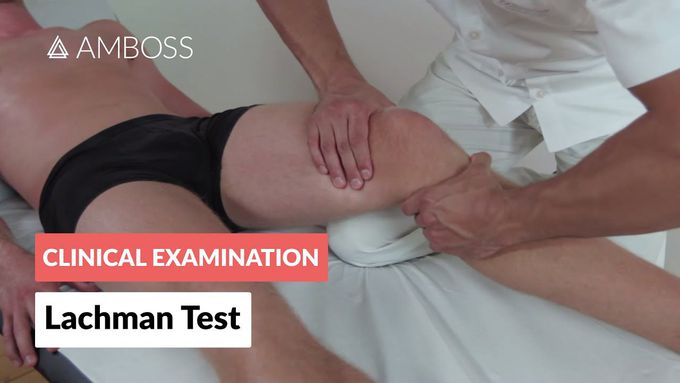

Maryum Mehboobabout 4 years ago

Lachman Test - Clinical Examination
The Lachman test is a physical examination maneuver that asseses anterior cruciate ligament (ACL) integrity, which is an essential component of knee stability. The Lachman test is best conducted on a supine patient with the knee flexed at 20 to 30 degrees. Physiologically, when the femur is stabilized and the tibia is pulled anteriorly, a well-defined "end-point" that limits anterior movement of the tibia can be felt. In a positive Lachman test, however, there is excessive unrestricted anterior movement of the tibia, with no "hard" end point. This indicates an ACL injury or tear. Video Index: 0:06 - Purpose of the test 0:17 - Performing the test 1:04 - Logical basis and interpretation of the test outcome
Other commentsSign in to post comments. You don't have an account? Sign up now!
Related posts
Cardiac AuscultationBrain anatomy and function, an overview | Neuroscience basics49.A 17-year-old boy took a tablet X for a headache. Drug X is a weak acid with a pka of 6.8. What percentage of the drug was most likely water soluble in the patient's plasma? Select one: a. 80% b. 65% c. 99% d. 1% e. 52%WelcomeI am a 13 year old boy with VERY minor OI (type 1) and am interested in ortho. If there are any cool or interesting things, I would love to see them!Mental and physical health are interconnected. We, as a society, need to work on emphasizing the importance of the two. This would prevent people developing physical and mental diseases at earlier and earlier ages.Best areas for auscultationLip mucosa examinationGeneral Examination - Clinical Skills OSCE - Dr Gill
Cardiac AuscultationBrain anatomy and function, an overview | Neuroscience basics49.A 17-year-old boy took a tablet X for a headache. Drug X is a weak acid with a pka of 6.8. What percentage of the drug was most likely water soluble in the patient's plasma? Select one: a. 80% b. 65% c. 99% d. 1% e. 52%WelcomeI am a 13 year old boy with VERY minor OI (type 1) and am interested in ortho. If there are any cool or interesting things, I would love to see them!Mental and physical health are interconnected. We, as a society, need to work on emphasizing the importance of the two. This would prevent people developing physical and mental diseases at earlier and earlier ages.Best areas for auscultationLip mucosa examinationGeneral Examination - Clinical Skills OSCE - Dr Gill

